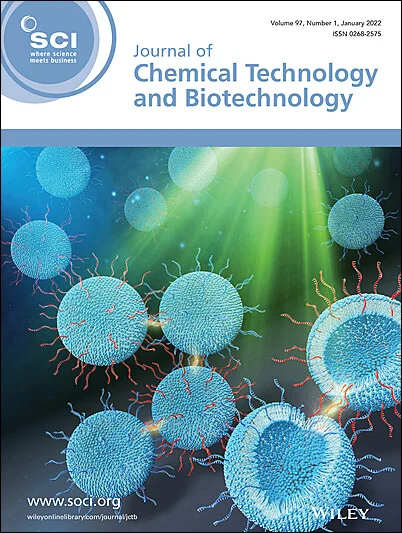Robust hydrophobic ceramic hollow-fibre membranes grafted by fluoroalkylsilane for water desalination via direct contact membrane distillation
Abstract
BACKGROUND
Ceramic membranes need to transition from hydrophilic to hydrophobic properties to mitigate membrane wetting and enhance separation efficiency in membrane distillation (MD). However, their intrinsic brittleness and weak mechanical properties limit their practical applications in MD. To overcome these challenges, this study focuses on developing robust hydrophobic hollow-fibre membranes (HFMs) by utilizing mullite–kaolinite (M) and stainless steel (SS) alloy as support materials. The membranes were fabricated through a phase-inversion/sintering approach, and the effects of varying M/SS ratios and sintering temperatures on membrane properties were investigated.
RESULTS
The fabricated M/SS HFMs were successfully modified to achieve hydrophobic surfaces using 1H,1H,2H,2H-perfluorodecyltriethoxysilane via dip-coating. The surface modification significantly enhanced the contact angle (CA) from 0° to 142°, demonstrating effective hydrophobicity. The membranes exhibited high salt rejection rates of 99.99% and improved permeate flux, reaching 38 kg m−2 h−1. Additionally, increasing salt concentrations to 30 g L−1 led to a decline in permeation flux from 38 to 4 kg m−2 h−1, whereas higher feed temperatures (up to 80 °C) increased flux from 21 to 38 kg m−2 h−1. The optimal M/SS HFM configuration, with a 4.7 M/SS ratio and sintering at 1450 °C, demonstrated superior mechanical strength (107 MPa), a high CA (141°), and a stable permeate flux of 28.2 kg m−2 h−1, with consistent salt rejection of 99.99%.
CONCLUSION
The successful development of robust, hydrophobic M/SS HFMs with optimized mechanical and separation properties highlights their potential for seawater desalination via MD. The enhanced mechanical strength, high hydrophobicity, and superior desalination performance make these membranes promising candidates for scalable and long-term MD applications. © 2025 Society of Chemical Industry (SCI).

 求助内容:
求助内容: 应助结果提醒方式:
应助结果提醒方式:


